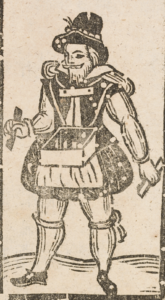
William III. Image: Wikipedia
Telling a tale with the names changed: contemporary comparisons of the Rye House Plot to the 1696 Assassination Plot. Beth Branscome
When a Jacobite plot to assassinate William III was discovered in 1696, supporters of William and his whig-dominated ministry pointed out similarities between this Assassination Plot and the 1683 Rye House Plot against Charles II. Embodying the links between the plots in these accounts was Robert Ferguson, a notorious radical whig who had become a Jacobite active in writing and plotting against King William. Representing the 1683 and 1696 plots as equivalent allowed establishment whigs to distance themselves from pre-revoutionary whig plotting, while portraying the Jacobites as representing a radicalism willing to use rebellion and regicide to achieve its goals.

William Petre, 2nd Baron Petre. Image: Wikipedia
Counties without borders? Religious politics, kinship networks and the formation of Catholic communities. James E. Kelly
This article examines the formation of Catholic communities and the roles played by religious politics and kinship networks within that process. It contributes to historiographical debates about early modern English Catholics’ self-identification in religio-political terms, suggesting that intra-Catholic feuds were not the sole preserve of the Catholic missionary clergy. It uses the Petre family, barons of Writtle in Essex, as a case study by which to argue that these seemingly inward-looking debates were actually about how the community understood itself in relation to the state and, as such, were fundamental in the process of English Catholic community construction.

Ballad Seller: Bodleian Library, 4o Rawl. 566(196)
‘Round-head Knaves’: the Ballad of Wrexham and the subversive political culture of Interregnum north-east Wales. Sarah Ward Clavier
This article broadens ballad studies to encompass a regional perspective and significantly adds to the literature on Welsh royalism. It argues that the ballad author sought to destabilize the newly established parliamentarian government by attacking its members’ honour, religion and personal morality. The article provides a contextualized and detailed textual analysis of a versified manuscript libel, a vitriolic and specific attack on the Wrexham committee of 1647. It considers it in the context of ballad and libel scholarship, Welsh political culture, and contemporary events, using a range of manuscript and printed sources to explain and analyse the ballad in depth.

